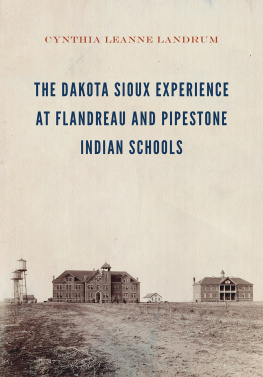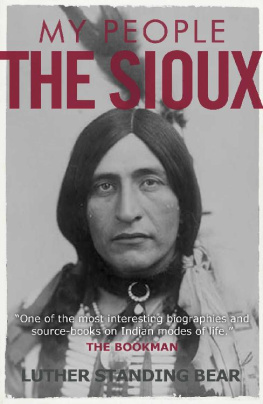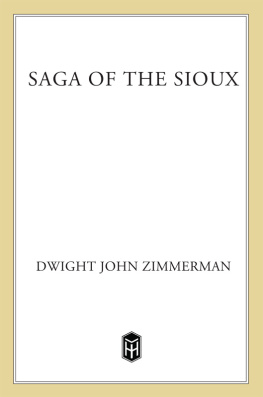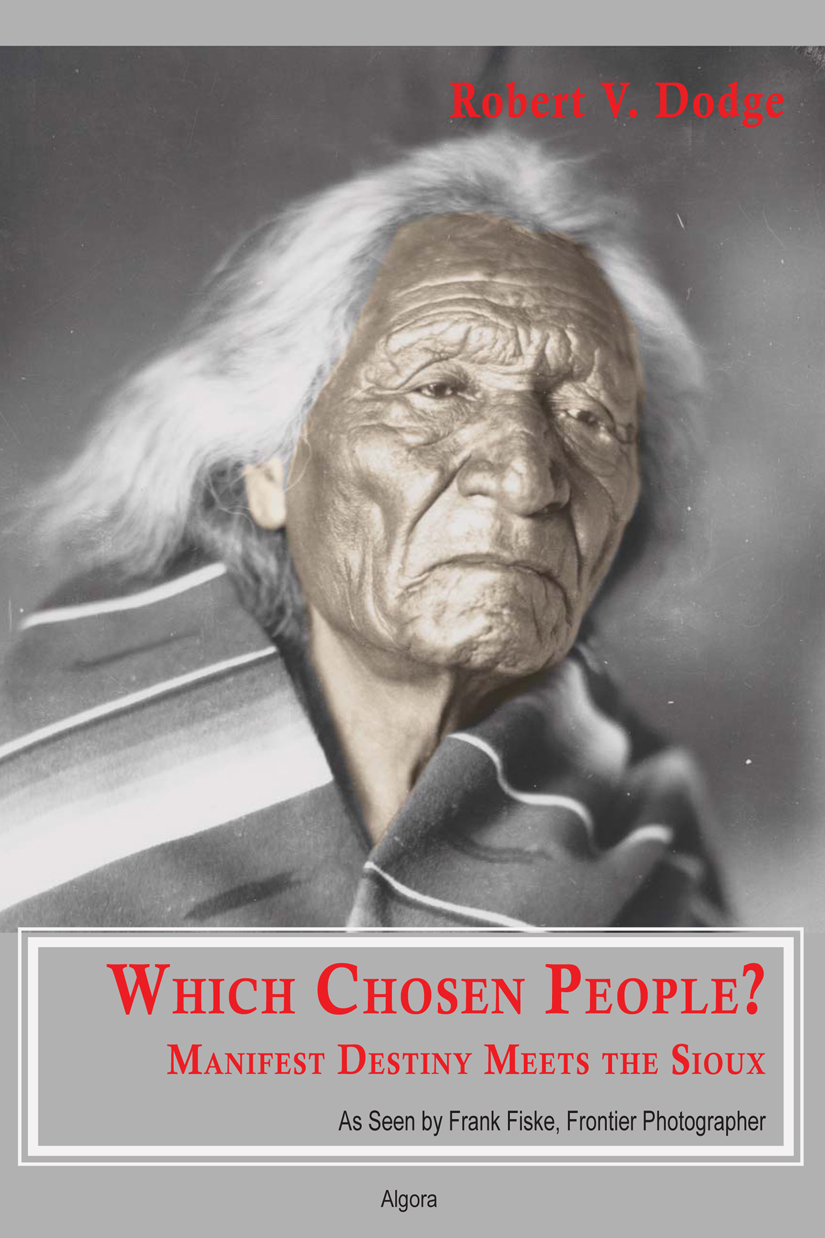Which Chosen People?
Which Chosen People?
Manifest Destiny Meets the Sioux
As Seen by Frank Fiske, Frontier Photographer
Robert V. Dodge
Algora Publishing
New York
2013 by Algora Publishing.
All Rights Reserved
www.algora.com
No portion of this book (beyond what is permitted by
Sections 107 or 108 of the United States Copyright Act of 1976)
may be reproduced by any process, stored in a retrieval system,
or transmitted in any form, or by any means, without the
express written permission of the publisher.
Library of Congress Cataloging-in-Publication Data
Dodge, Robert, 1945
Which chosen people?: manifest destiny meets the Sioux as seen by Frank Fiske, frontier photographer / Robert V. Dodge.
pages cm
Includes bibliographical references and index.
ISBN 978-1-62894-027-5 (soft cover: alk. paper) ISBN 978-1-62894-028-2 (hard cover: alk. paper) ISBN
978-1-62894-029-9 (ebook)
1. Dakota IndiansHistory19th century. 2. Dakota IndiansWars, 1890-1891 3. Indians, Treatment ofGreat PlainsHistory. 4. Dakota IndiansGovernment relations. 5. Dakota IndiansRelocation. 6. Sitting Bull, 1831-1890. 7. Fiske, Frank Bennett, 1883-1952. 8. PhotographersNorth DakotaBiography. I. Title.
E99.D1D63 2013
978.004975243dc23
2013027256
Printed in the United States
For Mya Jane Amberlynn Caroll
Acknowledgments
Tom Stocker warrants special thanks for introducing me to the work of Frank Fiske. I would like to express my appreciation to James A. Davis, the Head of Reference for the State Archives at the State Historical Society of North Dakota, for his considerable help in compiling appropriate documents and offering advice in dealing with the eight cubic feet of resources they have available on the individual who is the subject of this book. In editing this manuscript in advance of submission, Junia Baker, a long time friend, did the professional job she always does and for that I express my gratitude. Thanks to Sarah Walker for her efforts in making the photographs used in this book available.
Finally, it has been my pleasure to work with my editors at Algora Publishing, as they been extremely helpful, responsive and professional.
Table of Contents
Chapter 1. The New Chosen People and the Obsession
It was in his seventh year, and what a year it was, when he first thought about being one of Gods chosen people. He wasnt sure whether he was one, or really what it meant. Some of the soldiers had said things about whites being special and talked about something they called manifest destiny, which seemed to be related to why they were in charge. The teachers also said the Indians religion was wrong. Then there were the Chinese who passed through the reservation, coming from the mines in the Black Hills and looking for work on the railroad that the Northern Pacific was building in the area. They had been in the U.S. since the California gold rush and came over in labor gangs to build the transcontinental railroad. The soldiers and cowboys often mocked the strange-looking small men with their skull caps and queues who spoke Pidgin English and were willing to do womens work, like laundry. But Frank found it fascinating to listen in on their conversations of far off places at the post store and elsewhere, and he heard them speak in their quiet way of coming from the Middle Kingdom, where their emperor was the son of heaven. When they thought no one could hear, they spoke as though they were the exceptional people and the crude whites were barbarians.
Frank hadnt really taken much notice, as the Indian agency world that the U.S. government ran at Standing Rock Reservation was such a combination of whites and Indians with cowboys, settlers and ranchers passing through. People who lived there called the reservation the agency because the person in charge was the Indian Agent, often a civilian (as was the case at Standing Rock in 1890), or a military officer, and under the Bureau of Indian Affairs. The school he would attend included a mix of white and Indian students, reflecting the reservations population.
It was when Kicking Bear had come to visit the Old Bull that everything changed and it set him to thinking. Frank called him the Old Bull around their house because he was a family friend who visited Franks father at times. Chief Gall, Rain-in-the-Face and many others who might have been the chosen as well also stopped by for wagons or wagon parts.
Franks father, George E. Fiske, was born in Baltimore on August 10, 1856. He apprenticed as a painter and did some painting for Baltimore theaters before spending time at sea, when he visited South America several times. In the early 1870s he enlisted in the army and was sent to Arizona, then later to Dakota Territory, first Fort Sully, next Fort Bennett. At Fort Bennett he married Louise Otter of Cleveland, who had come out to visit relatives. In 1883 they had a child, Frank, and they gave him the name of the fort as a middle name. George left the army in the late 1880s to try ranching, but record bad weather contributed to his lack of success. He heard of an opportunity for a contract position at the new Fort Yates on Standing Rock Reservation in the year the Dakota Territory was about to be divided into two states, and this was in what would become North Dakota. In April of 1889, George Fiske became wagon master for the fort, a position of considerable responsibility. Frank helped his dad by tending a six-mule team, so people often called him Mule Boy.
Georges East Coast family worried about him living on the reservation with the Indians, as was apparent in the letter he received from his Baltimore sister who wrote at the time he arrived, What a good thing that no liquor is to be sold out there. It was true that liquor was illegal on the reservation, but with cowboys showing up from cattle drives and soldiers a long way from home, there were regular dances, prostitutes and saloons in abundance, and liquor available to anyone with money. It was a colorful, exciting environment for young Frank.
The Old Bull was known across the nation as Sitting Bull, and in that year, 1890, he was greatly feared. Perhaps it was right that he was. Sitting Bull was a Hunkpapa Sioux chief and medicine man and had been the only leader ever named of the Sioux Nation. The Sioux were the final barrier to the U.S. completing its empire that would have unbroken coast-to-coast control across the continent. Since his youth Sitting Bull had heard the white men speak of how the land was theirs as Gods will, because they were the chosen people or because it was destiny. They wrote their own laws to accompany these claims and though the Indians had sometimes agreed to their laws and given up some land, the agreements meant nothing. When the white men wanted more, they wrote new laws. He said they were all liars, because that had been his experience with them.
Frank found the Old Bull fascinating, and that fascination would remain with him. As he became a journalist, photographer and Indian authority, this enigma of a chief would intrigue and appeal to him more than any other figure. When Frank aged, he would wonder whether the defiant chief was a quixotic fool, battling against an inevitable superior master race, or a man ahead of his time who saw that the arrogance and aggression of Americas faith in the superiority of its whites would doom it to its own destruction.
At the moment, as Frank and others at Standing Rock had just learned, Sitting Bull had recently heard a story he much preferred to the white mans claims and broken promises. Kicking Bear, a chief of the Lakota Sioux of the Minneconjou band, had told him of his vision quest, a Sioux rite of passage into manhood that was a high expression of their religious life. Cleansing, fasting and hardship preceded vision quests; then a young man sought solitary communion with the Unseen and waited for a vision that would give him identity and guide him on his way to proper living as an adult. The vision was usually kept private but certain circumstances made it worth sharing. This was one of those circumstances, as would be his address to at the Council Meeting of the Hunkpapa Sioux that same year.






